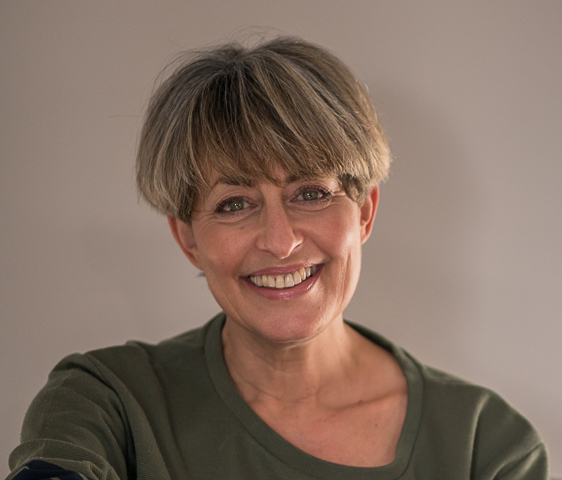Magical Menorca - warm, friendly and relaxed
All too often confused with its larger, showier neighbour, Mallorca, Menorca, may only be 52km from one end to the other (giving it the advantage of making it marvellously manageable to explore), but inbetween it packs in more gorgeous beaches than Mallorca and Ibiza, it’s other Balearic neighbour, put together, two compact, welcoming cities and enough sights and sites to keep nature and history lovers entertained and entranced.
In the past, like so many other tourist destinations, Menorca has suffered with the increase in all-inclusive package deals. Too often this means visitors don’t stray from their hotel pool-side. To say this is a shame, not just for local trade, but for the visitors themselves, would be an understatement. To come to an island as beguiling and rewarding as this and not take advantage of all it offers is, frankly, bonkers.
To make the most of Menorca’s delights you really need a car. Transport otherwise is sparse (buses) or costly (taxis). Finding your way around is straightforward – there’s just one, well maintained, main road that runs across the spine of the island from Cuitadella in the west, to Mao in the east, and pretty much every other road branches off from it. Signposting is mostly clear and easy to follow, but if you ever lose your way, El Toro, the highest point on the island (which the locals affectionately refer to as their “little mountain”, a fitting description as it rises to a not-terribly-mountain-like 357m) is almost exactly in the centre, providing a useful navigation reference point.
Once you’re independently mobile, the delights of the island are yours for the discovering. The following are an unapologetically subjective selection of my favourites, distilled from three happy holidays spent gently exploring (you absolutely can't do anything in a rush here. I think it may be the law) this tranquil, relaxing place.
A bevy of beaches
It would be possible (and, let’s be honest, extremely appealing) to spend months visiting all of Menorca’s beaches. Es Grau at the far east end of the island is probably the perfect family beach.
Es Grau beach at the eastern end of Menorca
An easily accessible, crescent shaped bay, fringed with low sand dunes, it has a narrowish strip of soft sand and a gently sloping sea bed which means you have to walk a long way before you get out of your depth, making it ideal for little ones to play in the water safely. There’s a lovely restaurant right on the water’s edge where you can enjoy a tasty lunch or dinner of locally caught fish.
Platja de Sant Tomas and Cala Santa Galdana, both on the south coast, are also ideal for families. Both are buzzier than Es Grau, with loungers for hire (be warned, these are expensive). Sant Tomas has the added appeal of a rocky outcrop just off the beach, which you can swim to,
The rocky outcrop just off Sant Tomas beach, Menorca
whilst Santa Galdana offers pedalos with slides and several fast-food style restaurants around its edges.
A beautiful, though rocky and at times steep, wooded walk of about 30 minutes around the headland from Santa Galdana is the smaller Macarella (which you can also drive to),
Macarella beach, Menorca
a pretty cove that’s a popular anchor spot for the many boats that cruise the coastline. I gather that just further on is a favourite nudist beach, Macarelleta, from which you’ll gather I can’t report on that one from experience!
Not that Menorcan beaches are for anyone who’s uncomfortable about women going topless, holiday-makers here are as relaxed about their bodies as they are about everything else. Of all Menorca’s beaches, Cala Pregonda in the north is my favourite.
Cala Pregonda, my favourite Menorcan beach
The final approach to the car park is along a wide, stony and very dusty track, and even then it’s a 20 minute undulating coastal walk, but the journey is more than worth it when you reach this beautiful horse-shoe shaped beach with its golden sands, transparent water and rocky headland jutting out to enclose the bay.
Small island, big history
Menorcans are fiercely proud of their history and reminders of the past are dotted around the island. From the grand – the house built by Nelson for Lady Hamilton commands the best view over Mao’s glorious harbour, to the ancient – the carefully preserved ruins of the castle of Sant Antoni in the pretty fishing village of Fornells, date back to 1637. And given the slightest chance they’ll regale you with story of how mayonnaise was invented in Menorca.
It’s also an island that’s rich in traditions, many centred around the fiestas held in each town. The biggest and most flamboyant, The Festes de St Joan, is in Cuitadella on June 23rd and 24th each year. It begins calmly enough with a mass in the cathedral but becomes increasingly wild as thousands of partying residents and visitors pack the main square, Paca d’es Born, and surrounding streets, to enjoy traditions that include the carrying of a live sheep through the streets, and the highlight event, the caixers, or horsemen, who ride their famous Menorcan ‘dancing’ horses through the dense crowds wedged into the narrow streets of the old town. As they progress through the throngs, the horses ‘dance’ up on their hind legs and the cheering, chanting revellers surge forward and attempt to touch the horse’s heart (located between its front legs) for luck. It’s exhilarating and terrifying to witness, and remarkable that no-one (animal or human) seems to get hurt in the chaos.
One of the ‘dancing horses’ in the huge crowds at the Festes de St Joan in Cuitadella
When it’s not hosting thousands of over-excited fiesta-lovers, Cuitadella is a vibrant, cosmopolitan city with lots of cafes and boutiques and an attractive harbour lined with restaurants. In contrast, Mahon, the capital, at the opposite end of the island, is sedate and gracious, with pretty squares and stylish shops. Its greatest asset and most attractive feature is its enormous, natural harbour, the second largest in the world.
Ariel view of Mahon Harbour
The deep, clear waters give access to trade and pleasure ships of all sizes from around the world and along its perimeter road are cafes and restaurants where you can sit and watch the aquatic world go by. Keep an evening free to have dinner at La Minerva, a restaurant floating on the harbour’s edge, which serves beautifully made, fresh local dishes.
Don’t miss
Other sights to enjoy include the jaunty blue and white striped lighthouse at Cap de Favaritx.
The lighthouse at Cap de Favarit
But don’t leave without paying a visit to Subaida, a 350 hectare farm in the centre of the island. Owned and run by the Montanes family since 1840, their cheese, known as El Caserio, is the best on the island. From 9-11am each day you can see the cheese being produced, and the on-site shop offers delicious samples to try and then buy.
And don’t miss out on the spectacular views of the beautiful Menorcan sunset from Cova d’e Xoroi in Cala en Porter, a huge cave situated halfway down a steep cliff consisting of several large chambers and platforms which have been turned into a bar and nightclub.
View of the sunset from spectacular Cova d’e Xoroi
I defy you, as you sit with a glass of the local speciality, gin and lemonade, with the sun setting theatrically behind the cliffs, not to be planning your next visit to this captivating island.
Other posts you’ll enjoy
The perfect spot for a Mallorcan mini-break












